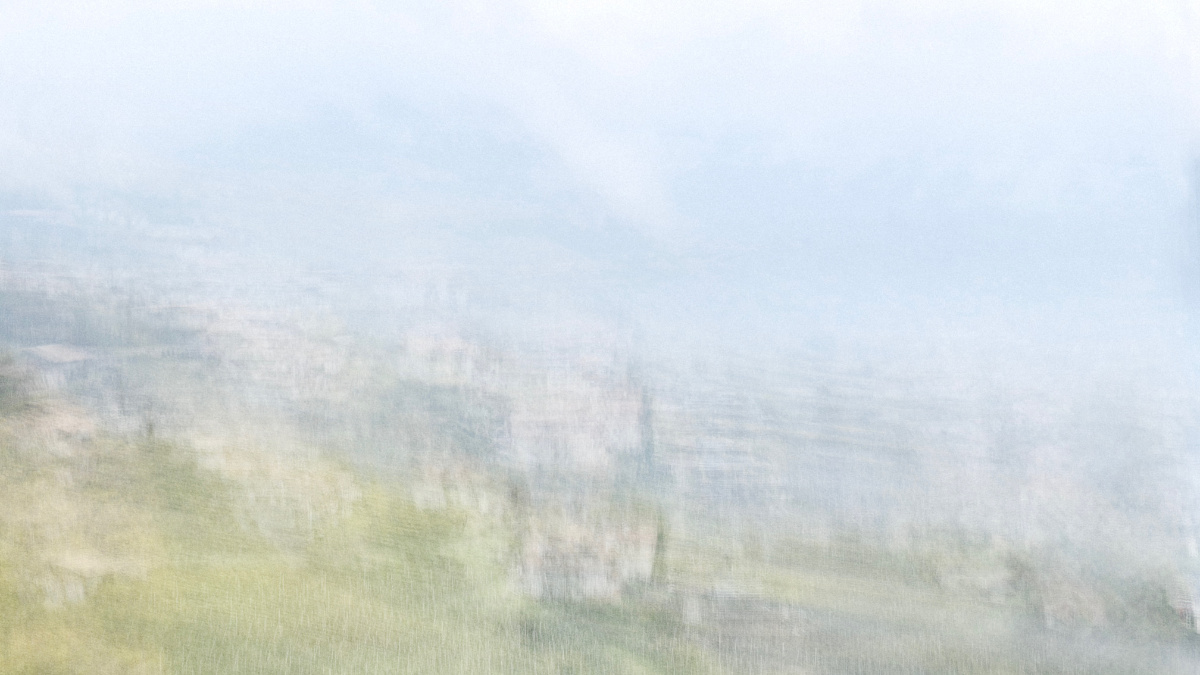Eno
Earlier this year I made a trip to South Tyrol again. It was early autumn and the leaves started to get colored already. As I got to know this area quite well over the years this time I decided to give up on making my regular types of images and instead go with something new. I remembered that for a long time now I have the Spectre App installed on my phone, which is a dedicated app to shoot slow shutter images right with your iPhone. So I decided to solely use this camera app for documenting this year’s trip to the Etsch valley of culture, wine and apples.
 3 s, f/2.2, ISO 20, 64 mm, iPhone 12 Pro Max
3 s, f/2.2, ISO 20, 64 mm, iPhone 12 Pro Max
First I needed some time to get used to this new experience. Surely I have taken slow shutter images before, also with my iPhone, but I needed to go back to those gentle movements while releasing the shutter button to create these slightly painterly effects I was looking for. Taking slow shutter images is bit like shooting short video clips, you need to stand still for a while, need to find your frame and take some seconds of time to get the shot finished. I continuously had the feeling of deliberately slowing down at least for some seconds to get these images.
While filming and shooting I found out that I get the most interesting results when pointing the lens towards contrasting colors of the read and yellow trees, the yellow wine, the green meadows, the blue hills or the turquoise water. It was a really fun and joyful experience to see these different colors come to life on my tiny phone screen in a totally unexpected and unseen way.
 3 s, f/2.2, ISO 20, 64 mm, iPhone 12 Pro Max
3 s, f/2.2, ISO 20, 64 mm, iPhone 12 Pro Max
I immediately knew that I wanted to watch these images I just got on a much, much bigger, on a huge screen, maybe on a whole wall. I couldn’t wait to see them projected somewhere. I wanted to dive in these landscapes of form and color. Instantly the results felt so abstract and painterly, almost like impressionist paintings. I did a search on Instagram and already found out about other people having the same idea and producing similar abstractions of the world they were surrounded by. Look for tags like “paintingwithcamera”, “bluronpurpose” or “impressionistphotography”. You’ll be amazed about the different search results. At least I was. I couldn’t believe that I got so late into this subject. Actually I always thought it’s one of my core disciplines to find the minimal essence of a scene, no matter what means are necessary to get it.
I started a new type of triptych, a new layout to present my new works on Instagram, and also rather new, on Vero, as well. I started to use a 16:9 frame to represent the wideness of these shots. Also they all seem to have a cinematographic feel and I wanted to transform this feeling of movement into my stills as well. I added a text layer right beneath my images to present some titles and clearly show that these images are meant to be watched by three, so I always posted three images in a row to get these nice looking triptychs.
And finally I couldn’t resist and make a video right from these stills. I arranged my slow shutter images in a timeline and added the most subtle but also most moving transition I could think of, I’ve used the so called Ken Burns effect to close the missing gap from one image to the next one. Ken Burns is a documentary film maker from New York who used this slow panning and zooming effect of the camera to make his often historic images more lively and captivating. I haven’t done video editing for a while and I have to say that over the years this process of stitching videos and images together has only become simpler and more straight forward. I got rather quick results after setting the constraints right.
Lastly, what is a video without music? Luckily this was an easy task for me as well as already while shooting these images in Italy I had a couple of songs spinning back and forth in my head. I just recently got the newest album from Brian Eno called “foreverandevernomore”. The famous British artist is experimenting with ambient music for basically all of his life. He did several solo albums but also worked with many well known international artists all through his career.
So I had the images, found a decent mode of glueing these images together and also got the perfect music. All seemed to come together and fall into place. About four weeks ago I had the final result on my screen. A 4K video called “eno” tributing this master of ambient music himself. But instead of further writing about it, it’s probably better to just watch it yourself. I uploaded a copy of my work for everyone to watch on YouTube. Keep in mind that because of using Brian Eno’s original tracks this video might not be able to stream in some regions of the world due to copyright restrictions. Anyway I hope you can enjoy it anywhere you are. And please don’t forget, find a screen as large as possible to experience it. Thanks for watching!
